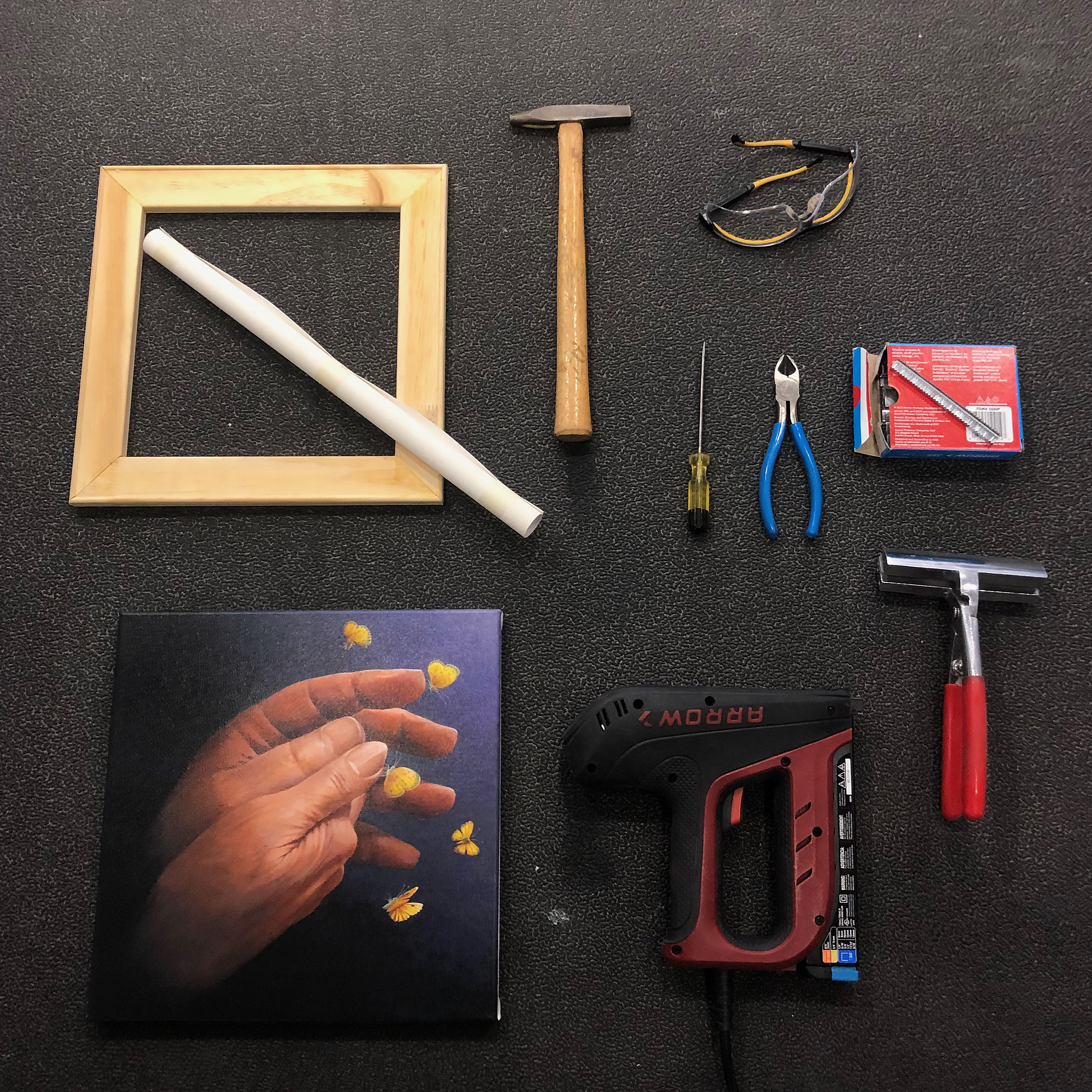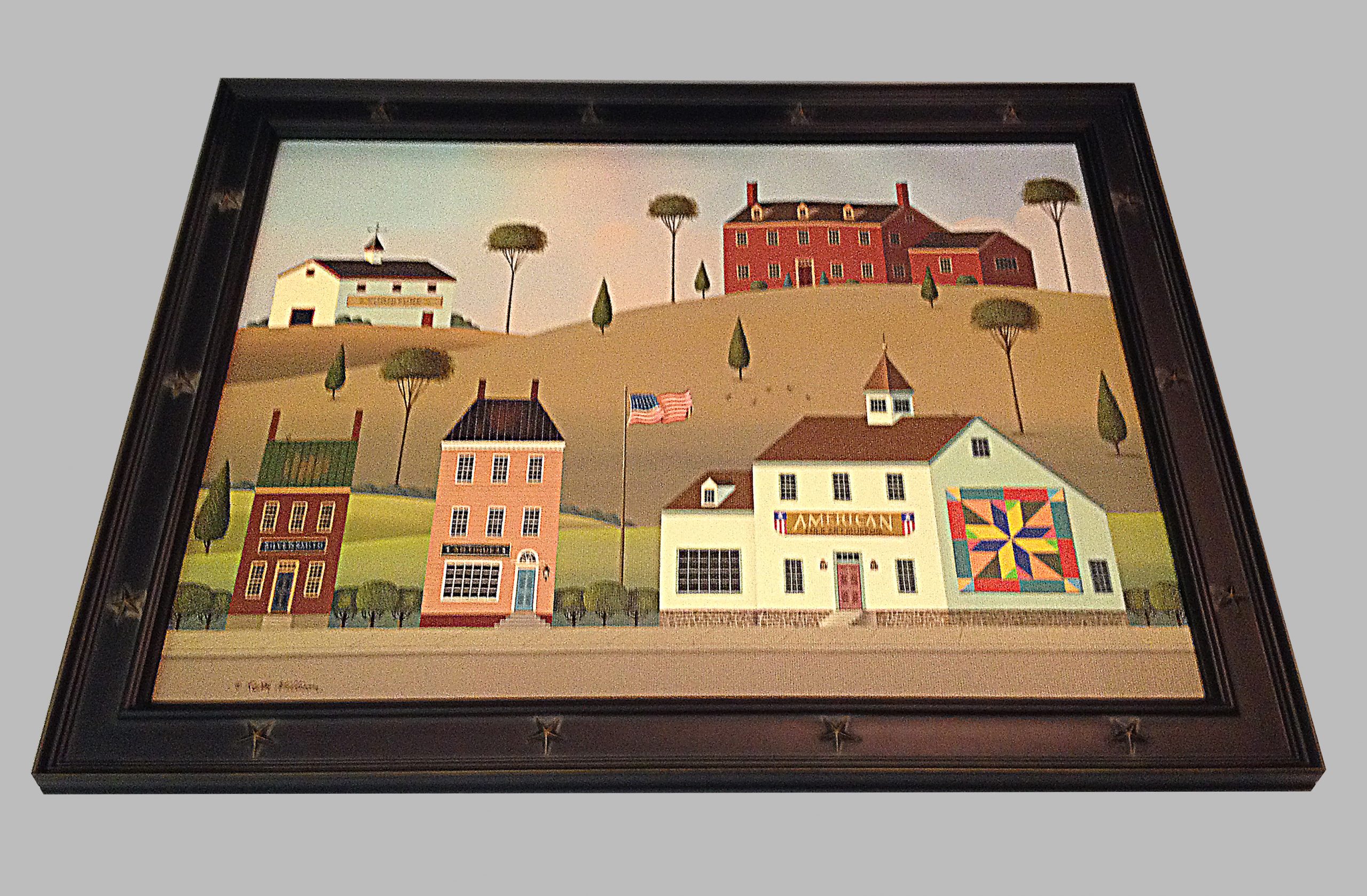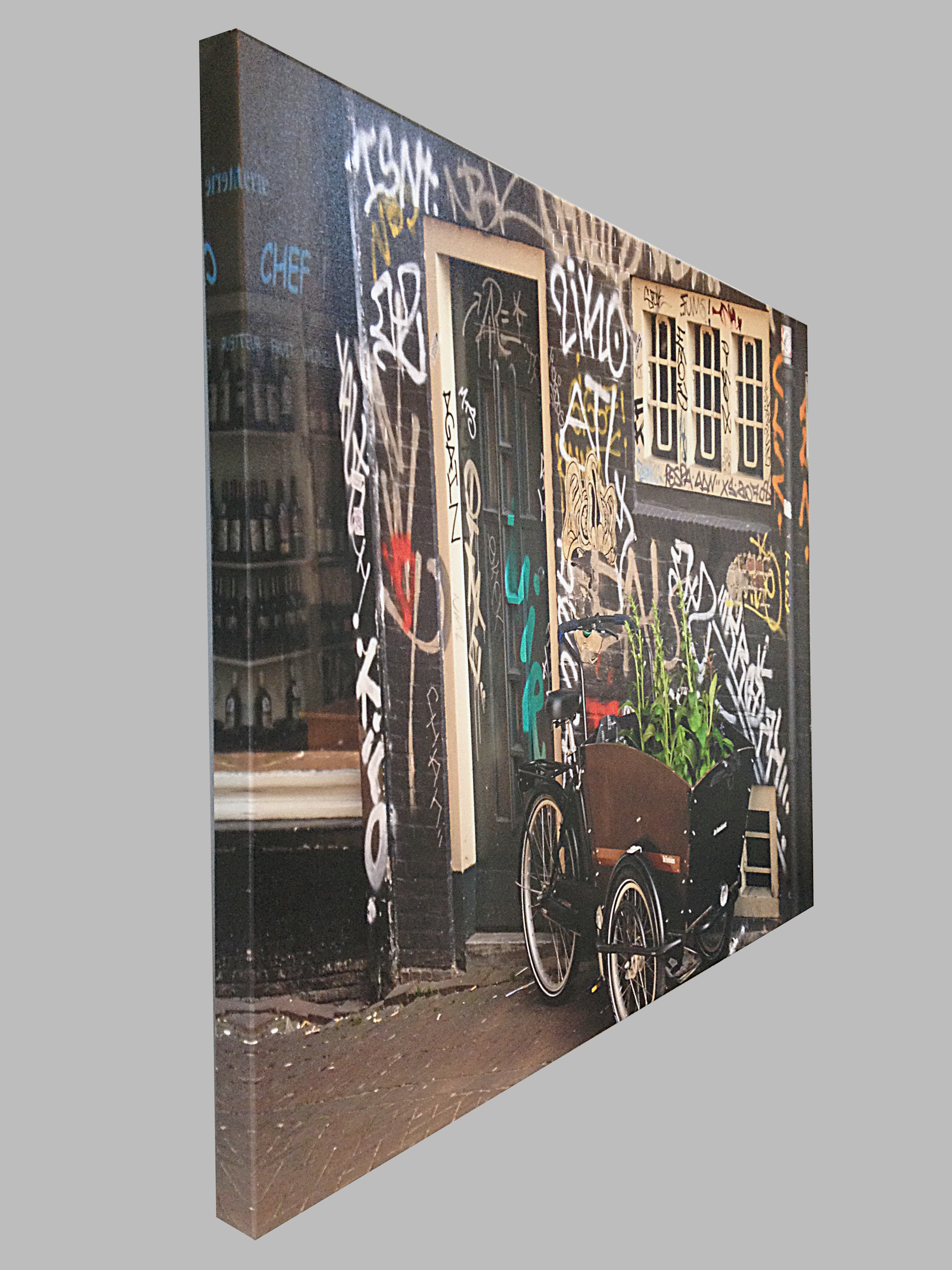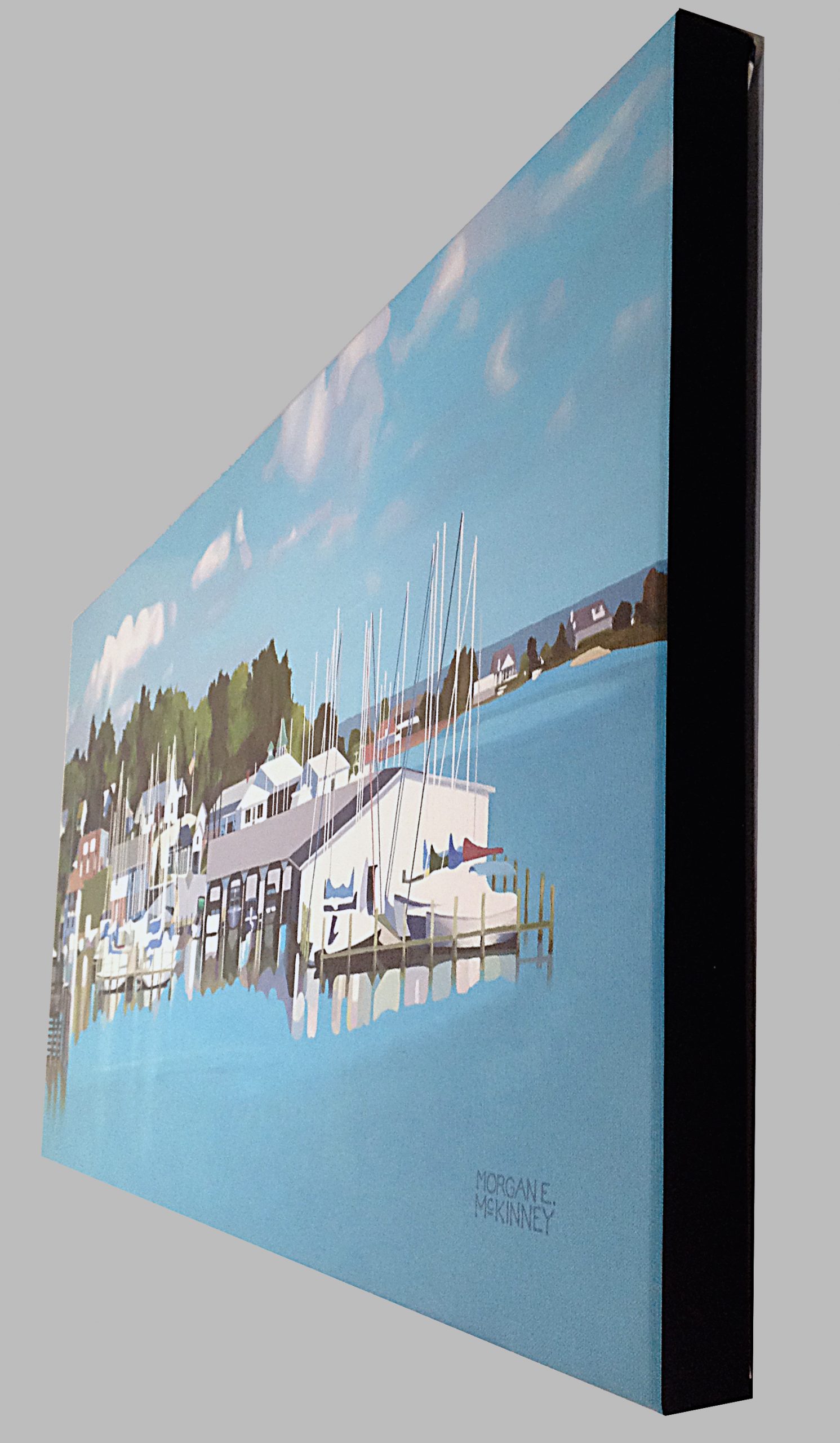Articles
Finishing Your Fine Art Canvas Prints
Stretched canvas print of Cathy Seay’s artwork
There are a lot of options when finishing your digital fine art canvas prints for exhibition. Canvas prints can be displayed just like an original painting, having a very similar look and feel. One of the best features of fine art canvas prints is that they do not need to be protected by glass. This is because canvas prints are protected with a layer of varnish. The varnish can be Glossy, Semi-Gloss, or Matte.
Canvas prints do tend to cost a little more to produce than paper prints but can cost a lot less to finish for exhibition. This is especially true with oversized (40″+) prints or odd sized prints. Matting and framing costs increase exponentially when oversize materials are required during framing. Canvas is a great option for reproducing your paintings or your photography in a unique archival presentation while saving a considerable amount on framing costs.
Once you have produced your canvas prints you will decide on your finishing options. One of the first decisions is stretcher bar depth. There are quite a few variations of depths for canvas stretcher bars on the market. We offer the three most popular sizes of .75″, 1.5″, and 2″ depths. Each thickness has its own specific use. The depth of your bars is usually based on the size of the piece and whether you are planning on leaving the sides of the canvas exposed(gallery wrap) or adding a frame around the piece.
The thinnest bar of them all is .75″. Most of the time a canvas stretched on this size bar is intended to be framed. If you plan to hang a .75″ stretched canvas on the wall without a frame it tends to have a slightly unfinished feel. Thin bars are prone to warping slightly with larger size canvases when not being supported by a frame. These thinner bars are flexible and with larger canvas prints, they never really sit flat on the wall unless held by a frame. Sometimes you have to stretch on thin bars just to fit a lower profile of a frame moulding you have chosen. This is to prevent a large bulge behind the frame off of the wall.
Usually the 1.5″ and 2″ stretcher bars are used for gallery wrap presentations. A gallery wrap is when the the canvas is stapled to the back of the stretcher bars and the sides of your canvas are left exposed. This gives the canvas a clean, modern look. You can leave the edge exposed with no frame and it will be ready to hang or you can use a floater frame to highlight the edges of your gallery wrapped canvas. Both of these options of stretcher bar have a gorgeous presentation and can end up saving you a lot on framing, especially with your oversized prints.
If you choose to gallery wrap your canvas prints you have several options for the sides of your stretched canvases. You can simply leave it white or dress it up a little by choosing a complimentary solid color, black, or grey.
Framed canvas print
You can also reflect your image onto the sides of the canvas, giving the appearance of your painting or photograph continuing on the sides. This image reflection method does not work for everything. Sometimes after reflecting the sides of an image a little editing must occur to clean up undesired results. Undesired results could be elements of an artist’s signature showing up on the side or with a portrait, a portion of a persons head or limbs ending up on the side. If it can’t be fixed a solid color option must be chosen to prevent it from being distracting.
Reflected sides on 1.5″ bars
Solid black sides on 1.5″ bars





